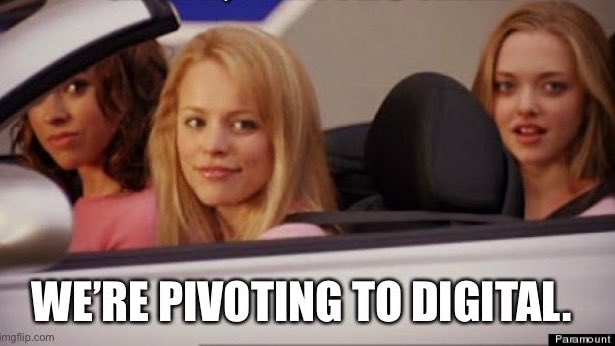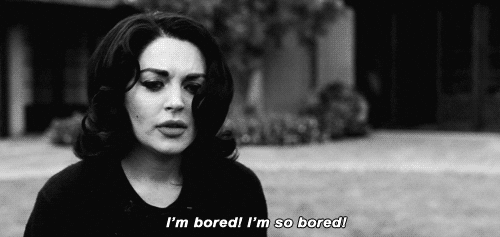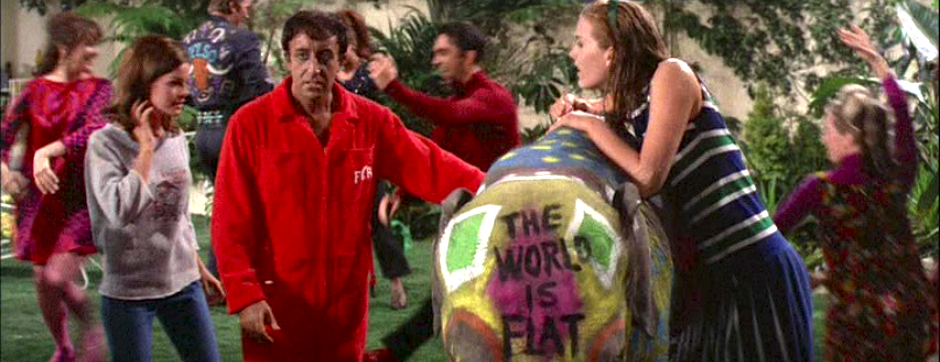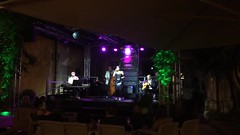
Tell you something: I did no pivoting, when the remote ed pandemics struck. In fact, I seamlessly transited from face-to-face to remote and online teaching (and learning, ftw) in an easy way. Here is my experience after three full COVID-driven education months.
What has the pandemic meant to me? Well, during the quarantine I found a lost space (like many are saying). I enjoyed it (yes, the privileged me).
I enjoyed it.
Laziness, time flowing slowly, sleepiness, staying home, not seeing anyone (nor listening to); reading; watching; silence; cooking; teaching; speaking; writing; breakfasting; dreaming; re-owned time.
During the semester, of course I was overwhelmed by classes, email, blog posts and newsletters. But I enjoyed it. Wasn’t I supposed to? Plus the Zoom, a lot of Zoom, from my home’s dining room. Cogito Ergo Zoom!
Hey, This is not real distance ed, guys–say some. This is just remote education. Know what? Stephen Downes debunked that, stating that yes, that was and is distance ed, albeit not in its best shape. So, what did I do during the second half of the semester? I finished happy and so were my students. I did not lower my standards, for one.
A little debate spurred out of the question of whether this form of emergency teaching could be considered distance education. Jim Groom resumes it beautifully (After this there will be no more good clean online fun). Starting with the following observation by Downes:
Online learning should be fast, fun, crazy, unplanned, and inspirational. It should be provided by people who are more like DJs than television producers. It should move and swim, be ad hoc and on the fly. I wish educators could get out of their classroom mindsets and actually go out and look at how the rest of the world is doing online learning. Watch a dance craze spread through TikTok, follow through-hikers on YouTube, organize a community in a Facebook group, discuss economic policy in Slack. All of that is online learning – and (resolutely) not the carefully planned courses that are over-engineered, over-produced, over-priced and over-wrought.
Stephen Downes: Who’s Zoomin’ Who? (After a post by Clint Lalonde)
After that, some people protested vehemently, saying that education must be a planned, carefully thought-over process, designed, modularized and finally organized around students. While Jim took a medium stance,
I was reading Downes as suggesting the nature of the online pivot might open some space for forgiveness for subject experts to explore and experiment a bit.
…
But again, I was not seeing Downes as suggesting explore brave new technologies and learn how to broadcast on the radio or something, but rather just be flexible and try different approaches whether via email, LMS, WordPress, Youtube, etc.
No forgiveness, course planning should involve some experimenting, perhaps not always, but often. and it does. This time, we could do that experimenting more freely because we constructed the plane while the plane was flying. The huge point of online education at this point is that it is often heavily regimented and courses are constructed by means of some catch-all recipe. That’s OK, it’s called best practices. And that’s OK, if it doesn’t preclude some vivid passion and sparkles from happening. The tracks of the LMS may be good, when they bring forth some good practices, but it is not when courses resembles each other. I mean, the themes under consideration should inform the design of the course, right? The design–and certainly the visual, esthetic and interfacing design is part of design tout court), but we have delegated that part and function to the LMS. So be it. Well, no. In fact part of what Jim, Brian Lamb, Gardner Campbell, Alan Levine and many more have been preaching is to build some part of one’s course as an indie website, out of a process of Instructional Design that does not abdicate the esthetic and visual design to the platform of choice. Mike Wesch has built a whole methodology out of a well-thought course design centered around experiences–not just concepts. See his mixtape/podcasting example to check the joy of his own doing!

Albeit far from the heights of Mike, I have been trying to follow this route for long, and almost all my courses have a website that I call the course Web hub. And this is why I had almost no pivoting! Hey, I got to have Jim Groom talk about Mario Bava’s Evil Eye through Zoom in my Italian film & culture class!
In the end, this video shows a sound methodology to develop an outstanding joyful, appealing and compelling course.
No doubt, as Campbell recorded (see video), the lot of small pieces loosely joined of the Web came into focus when people started using such services to embed interaction and content onto one’s course, via LMS or Website.
Anyhow, this is my immodest best practices:
All interaction and course work orbit around the Web hub (for instance, the New Media course, inf115.com). It is a syndicated hub where students’ contributions get aggregated from their own blogs. emphasis on word “own“: meaning, the blogs and posts therein are theirs, not the University’s nor mine.
After it starts, the Machine works seamlessly. Every week I publish a post with ideas, objectives and work ahead. Come Saturday or Sunday, I also email a short newsletter (I love newsletters) with some of such ideas, but more resumed. The newsletter I found is useful also as reminder bearing device, to help students not feel lost. (BTW, students say they feel lost all the time, not only when remote. To which state of mind I reply that’s fantastic–it’s the prelude to asking good questions and learning; in fact I don’t get why we are so desperately afraid of students expressing their sense of uncertainty and doubt. Certainly, blogging gives them an opportunity of expression much stronger that whatever forum). I love using GIF’s (They are useful to convey meaning, examples, etc; are light; and we all love memes)–I ask them to create and use GIF’s and shere them over the nets.

Apart from the blog there’s Twitter expression (we want to be authentic by using the same tools pros use); so we tweet and retweet; and student pairs rotate as managers of the official course Twitter account. The apparently simple fact of giving full voice (and publication “rights” from Siberia to Patagonia) is an all-powerful device. First, it is an exercise on freedom of expression and freedom of the Press: two rights we enjoy in many nations but not everywhere equally. So it also builds conscience that rights are to be defended and protected and yes! exercised lest they atrophy. And we are so privileged! Second, it also builds the conscience of what it means to make something public, vis-à-vis enclosing it in a closed drawer. All this beyond the empowerment of getting their voice out.
That’s it–well, sure, there’s more, but that depends on the class: we may be doing podcasts (see La Situación, from the New Media course inf115); or AWS practicing with a Web server install; or doing social bookmarking (nobody believes in that anymore, apparently) or collaboratively share curated compilations of media preferences.
Apropos of privilege. I shall come back to it shortly, precisely in a time when we are talking a lot about it in many contexts, from BLM to male privilege.




Hi! I really like your content. Your post is really informative.
Best LMS companies in india
Remarkable! Its truly awesome article, I have got much clear
idea about from this article.